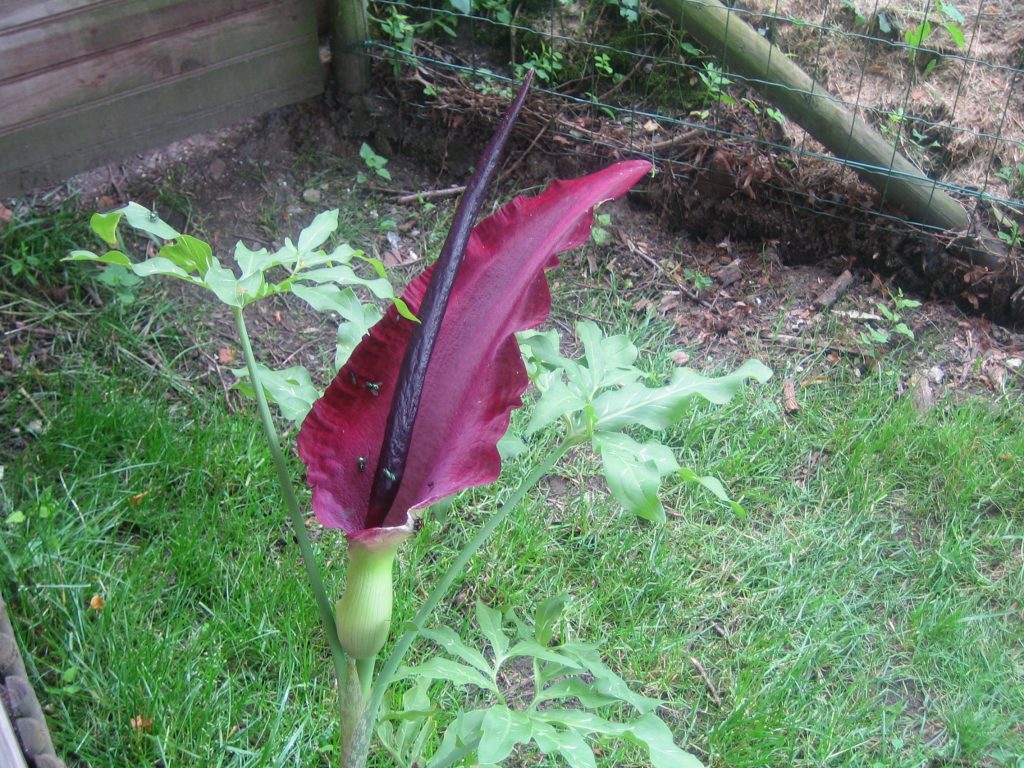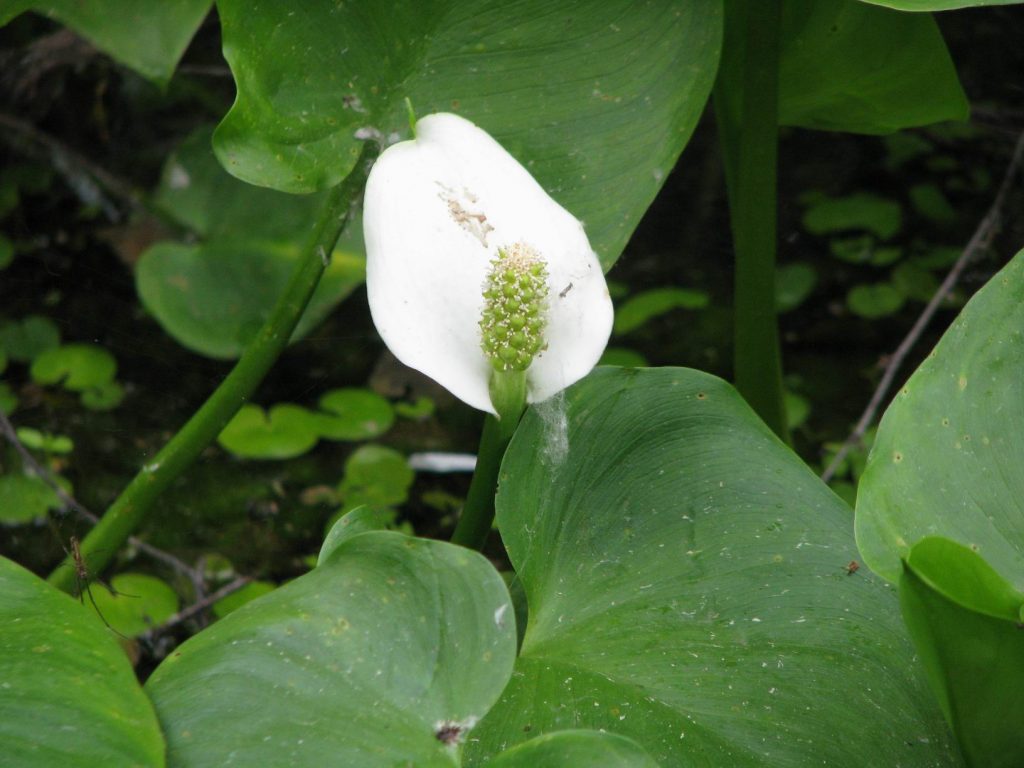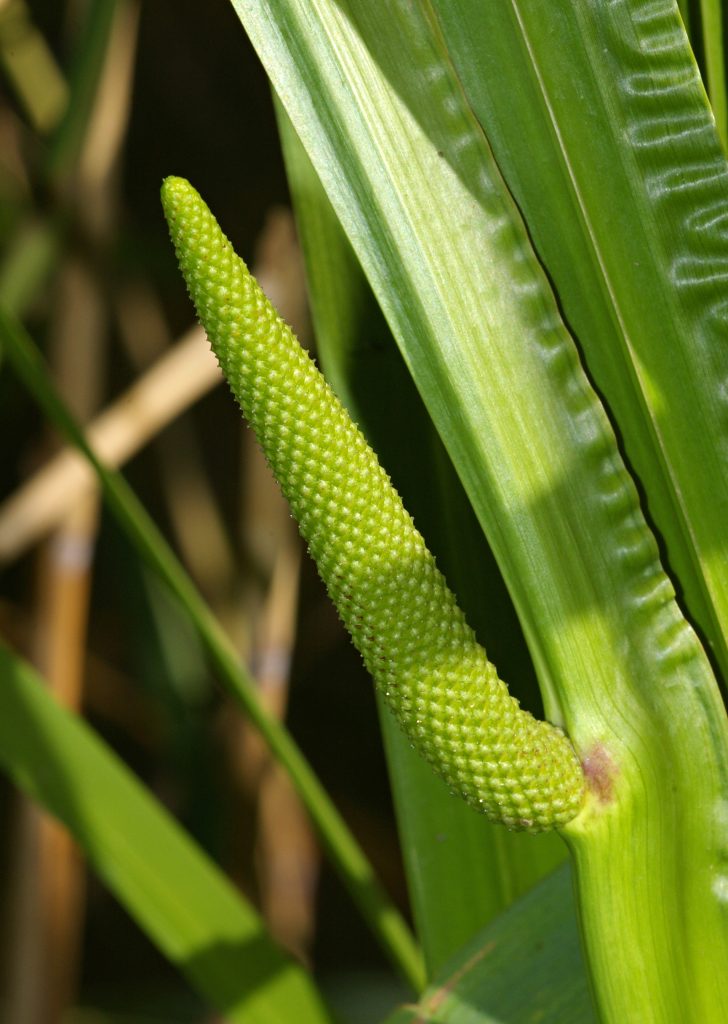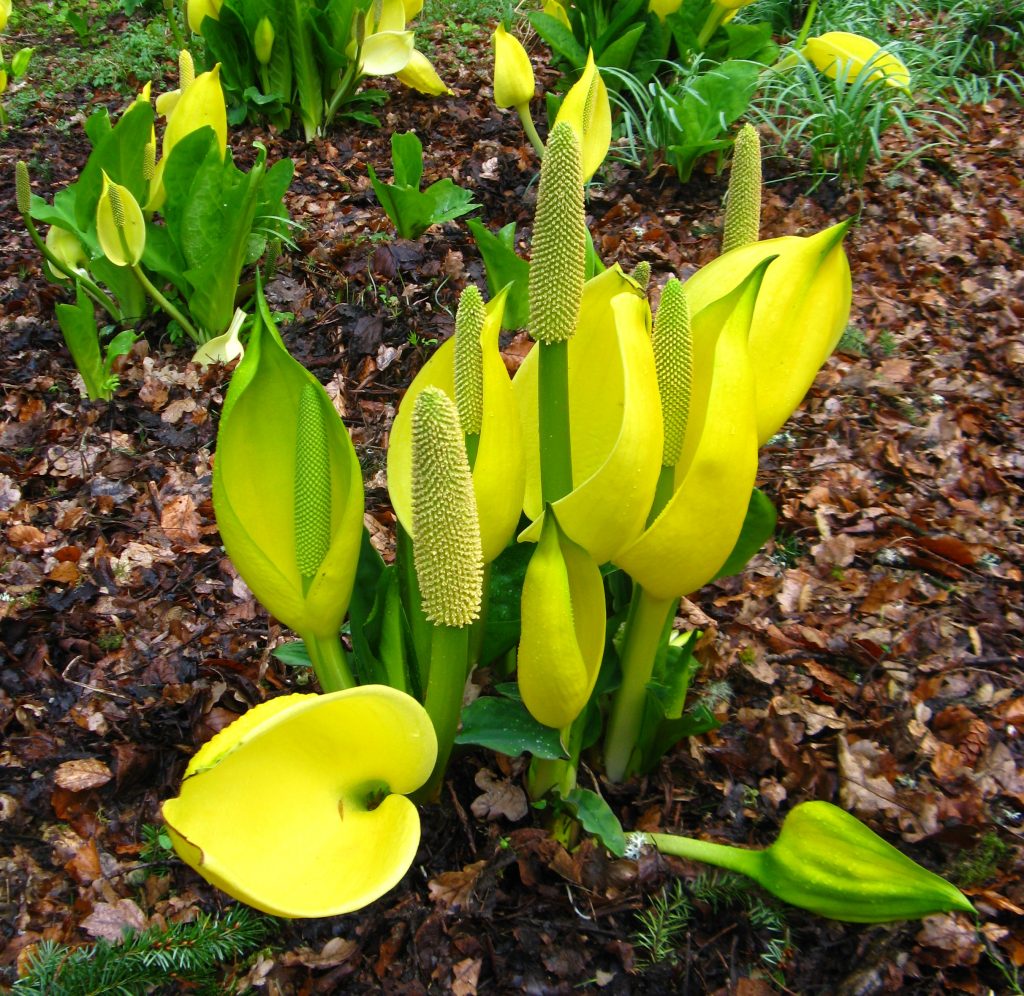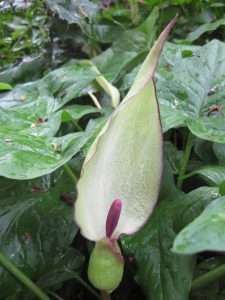
Lords-and-ladies, also known as cuckoo pint, is a common relation of titan arum found growing wild in Scottish woodlands and hedgerows.
On Monday 29th June New Reekie is still looking good on the third day of flowering so there is time to introduce some of the family that you might see growing in gardens in Scotland…
Titan arum is in the Araceae family along with over 3,700 other plant species. The family has a characteristic floral structure called a spadix that is a column surrounded by small flowers. Male and female flowers are sometimes present as two distinct and seperate bands around the spadix. In most species the spadix is enclosed in a spathe that partially or totally obscures the small flowers. A curious feature of the family is that the spadix often heats up through chemical reactions taking place within it. This is generally a means to help disperse insect-attracting smells that often mimic rotting flesh and appeal to carrion flies and beetles.
In Scotland the most common member of the family is lords-and-ladies (Arum maculatum), a frequent woodland and hedgerow plant that has a structure very similar to titan arum, just a great deal smaller.
A number of other species have been introduced as garden plants and include sweet-flag (Acorus), skunk-cabbage (Lysichiton), bog arum (Calla) and dragon arum (Dracunculus).

